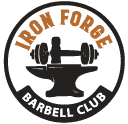Join 2,000+ gyms that trust
CloudGymManager




When a gym runs smoothly, communication between the staff and members is simple and routine. Class schedules stay consistent, equipment works as intended, and members enter and exit the facility without interruption. However, crisis situations break those patterns and introduce confusion. Power outages, storms, equipment malfunctions, and health emergencies force gyms to take immediate action. These events often occur with little warning and demand urgent decisions. In these moments, crisis communication becomes one of the most important operational responsibilities any fitness facility has.
Poor communication during an emergency can quickly damage a gym’s reputation. Members worry about safety, become frustrated with uncertainty, and assume that leadership is unprepared. Some complain publicly or cancel their memberships. Others avoid returning due to a lack of clarity or incident follow up. A strong crisis communication strategy protects the business, reduces legal risk, and reassures members that safety is always the first priority. With the right systems in place, gyms can manage any emergency in a calm and structured manner.
A well designed crisis communication process allows gym operators to respond in seconds, not hours. Staff know what steps to take, which channels to use, and who is responsible for each task. Members receive clear instructions, updates, and reassurance. Even when the emergency is significant, consistent communication shows professionalism and leadership. Whether the situation involves a temporary closure, serious accident, equipment failure, or unexpected health issue, rapid communication is the difference between a controlled situation and a reputational crisis.
The goal of crisis communication is simple. It ensures that every member knows what has happened, what action is being taken, and what they need to do. When the messaging is clear, members feel protected and valued. When communication is missing or delayed, the outcome becomes unpredictable. Developing a structured crisis response plan prepares any gym for the unexpected and ensures that a temporary disruption never becomes a long term business problem.

There are dozens of situations where a gym needs to communicate rapidly, but several categories appear more often than others. Weather closures are one of the most common causes of operational disruption. Snowstorms, hurricanes, and heavy rainfall can shut down facilities within minutes. Power outages and flooding may force evacuation or require shutdowns for safety reasons. These scenarios demand fast action from management.
Equipment failures are another major category. Large fitness machines operate under constant use and require ongoing maintenance. A broken treadmill, malfunctioning weight machine, or unsafe cable system can create hazards. When high demand equipment fails during peak hours, the operational and safety consequences become significant. Gyms also experience health and safety incidents. These include injuries, medical emergencies, contamination, or exposure to infectious diseases. In these cases, speed and transparency are important. Members want to know what happened and whether the facility remains safe to use.
Staff emergencies, including instructor no-shows, illness, or sudden absences, also require rapid communication. These issues disrupt classes and force scheduling adjustments. In some gyms, instructors are the center of the experience. Suddenly canceling a popular class causes complaints and negative reviews if there is no clear communication.
Operational emergencies can also appear when technology fails. A malfunctioning check in system, security system failure, or payment processing outage can prevent normal operations. When technology goes offline, members become frustrated if they do not know what is happening.
The most effective gyms classify emergencies into categories such as operational, weather, facilities, equipment, and health related issues. Each category requires different messaging structures, and each one triggers specific actions. When leadership understands common emergency scenarios, they prepare more effectively and respond more confidently.

Using the correct communication channels is critical during a crisis. Not every situation requires the same form of messaging. Some emergencies need immediate text alerts. Others require email, social media announcement, or mobile app notification. The rule is simple. The more urgent the situation, the faster the channel must be.
SMS messages are ideal for urgent notifications such as facility closures, medical emergencies, and safety warnings. These messages reach members instantly and are more reliable than email during immediate situations. Email is best for detailed updates. It allows operators to clarify the timeline, explain the nature of the closure, and describe what actions members should take.
Websites and social media are public platforms that communicate with both members and the community at large. During closures that last longer than a day or two, gyms should update social channels at regular intervals. This prevents assumptions and misinformation. In app notifications are effective for members who use digital tools to access schedules, book classes, or check in. With clear communication in the app, confusion can be avoided and schedules can be updated automatically.
Some emergencies require individual phone calls. For example, if a member was involved in an incident or needs to be contacted personally, a direct call becomes essential. A multi channel approach ensures redundancy. If one platform fails or members do not check messages frequently, another channel will still reach them.
CloudGymManager includes mass communication capabilities that allow gyms to send emergency alerts and updates instantly to all members. These tools simplify communication during closures and ensure that important messages do not get lost. When communication is predictable and consistent, members trust that leadership has control of the situation.

A crisis is not the time to write new messaging. Every gym should develop templates before emergencies happen. Pre written templates speed up communication, reduce stress, and ensure that the messaging remains accurate. Templates should cover several common situations: weather closures, equipment outages, power loss, cleaning incidents, and class cancellations.
Effective templates answer five questions: what happened, what action is being taken, what members should do, how long the disruption will last if known, and when updates will arrive. Templates should also be ready for multiple outcomes. For example, a power outage may last only one hour or may require full closure. Creating multiple versions allows staff to respond instantly.
Tone is also important. Crisis communication requires calm, direct language. Overly emotional or unclear messaging causes confusion. Members need assurance that action is being taken. Templates provide structure and prevent messaging mistakes during stressful moments.
The most prepared gyms update their templates quarterly. As facilities add new services, equipment, or policies, templates must change. A well organized set of templates allows even new staff to communicate correctly and prevents mistakes during urgent situations.
When emergencies last longer than one day, membership billing and compensation become important issues. Members expect fairness. If the gym is closed for multiple days due to damage or weather, crediting accounts or extending memberships protects long term loyalty. Transparent billing decisions show that the business values its members. If billing continues during an extended closure, dissatisfaction increases.
Gyms typically use three approaches for billing during closures. The first is to pause billing entirely until the facility reopens. The second is to offer a credit for missed days or partial months. The third is to extend the membership term. These solutions prevent complaints and cancellations.
Gyms should communicate billing changes in advance if possible. This avoids surprise charges and reduces disputes. Some facilities offer virtual classes as compensation. Others provide additional guest passes or access to premium services. Whatever method is chosen, the communication must be clear.
CloudGymManager supports billing pause features and credit adjustments so gyms can make billing changes quickly and correctly. With flexible tools, owners do not need to manage billing manually or risk errors.
Health emergencies require a different approach. These incidents involve privacy considerations, medical staff coordination, and legal implications. When a member is injured or a medical emergency occurs, communication must focus on safety. Members should be instructed to remain calm and follow staff direction.
If the situation involves contamination or exposure to infectious disease, the facility should communicate details without violating privacy. Members must be informed about the risk and the cleaning measures being taken. These communications should be factual and simple. Gyms may need to coordinate with emergency responders or health authorities.
Follow up messages are essential. Members want confirmation that the facility is safe before returning. Failure to follow up causes uncertainty and may lead to membership cancellations. Planning for medical communication ensures clarity.
Communication is only effective when staff understand their responsibilities. Crisis communication depends on a chain of command. Staff should know who initiates communication, who updates messaging, and who directs operational changes. Without a clear hierarchy, decision making becomes slow.
Training should include three elements. The first is scenario based response planning. The second is communication training. The third is system familiarity. All staff should know how to send messages, cancel classes, update schedules, and verify member safety.
Training should be reinforced regularly. As staff change positions or facilities update equipment, training must evolve. A crisis communication plan is only as strong as the team that carries it out.
Poor communication during emergencies can create legal risk. If members are injured or feel unsafe, they may claim negligence. Transparent communication is a preventative measure. It demonstrates that the gym acted responsibly and informed members quickly.
Written communication also creates a record. When messages are saved and documented, they become evidence of responsible management. Gyms should store messages for record keeping. This applies to closures, injuries, and equipment failures.
Clear communication policies also protect staff. When staff follow documented procedures, they avoid improvisation. Improvised decisions lead to mistakes, inconsistent messaging, and possible legal consequences.
The tone of crisis communication matters. Members need reassurance and transparency. If the facility is closed, communication should acknowledge the inconvenience. Members respond positively when the gym takes responsibility and shows concern.
Empathy is not just polite. It protects reputation and builds loyalty. Many gyms use cold automated messaging during crises. Personalized communication performs better. When communication feels supportive, members respond with patience rather than frustration.
The crisis does not end when the facility reopens. Members expect follow up messaging that explains what happened, what has been fixed, and how operations will continue. If cleaning or repairs were completed, describe the process. Follow up messages build confidence.
If scheduling changes occurred, confirm them. If a program has been canceled, offer alternatives. The goal is to show that the gym returned to full function and learned from the situation.
Crisis communication is one of the strongest operational safeguards a gym can implement. Emergencies will always happen, but the outcome is determined by preparation. When gyms prepare templates, document procedures, train staff, coordinate communication channels, and communicate with clarity, they stay in control during uncertainty. Members judge a gym’s quality not only during normal conditions but during disruptions. A strong crisis communication system protects reputation, improves safety, reduces legal risk, and ensures that temporary closures never become long term losses.
CloudGymManager provides communication tools that allow gyms to notify members quickly, manage billing changes during closures, and coordinate mass messaging. With simple and centralized systems, fitness facilities can handle crises with confidence and maintain member trust even when unexpected situations arise.

Opening a gym or running an existing one comes with financial uncertainty. Even if membership sign ups are steady, it can be challenging to understand whether the business is truly profitable. Many gym owners focus heavily on member acquisition or equipment investments but never calculate the most important number in their business model: how many members are needed to break even. Break even analysis determines the exact member count required to cover monthly operating costs. Once that threshold is reached, additional memberships generate profit.
Most gyms are not profitable early on because fixed expenses are high. Rent, utilities, and equipment financing alone can create significant financial pressure during the first twelve to twenty four months. However, lack of profit does not always indicate weakness. Industries with high upfront fixed costs often take longer to achieve profitability. The key is to know the financial target and understand how membership tiers, pricing structure, and operational strategies affect the break even point. Proper analysis gives gym owners confidence in pricing decisions, capacity planning, and revenue forecasting.
Break even analysis is also critical for new gym owners evaluating feasibility. Without knowing where the financial threshold sits, it is difficult to determine whether a business model is realistic. If rent, payroll, and utilities require two hundred members at an average monthly rate of fifty dollars to break even, but the local market supports only one hundred potential members, the model must be revised before launching. Break even analysis prevents costly mistakes during planning and helps existing facilities identify ways to become more efficient.
A complete break even calculation includes fixed costs, variable costs, contribution margin per member, and expected churn. Each gym has a unique financial structure, but there are common patterns across facility types. Boutique studios with fewer employees and lower square footage require fewer members to break even but often depend on higher membership tiers. Traditional commercial gyms require more members but may benefit from tiered pricing. CrossFit boxes and martial arts studios fall in the middle due to specialized programming and coaching based models.
Once the break even number is determined, the business gains strategic clarity. Owners can set realistic targets for class capacity, sales, and pricing. They can calculate how many members must be retained each month and understand the financial impact of churn. Break even data also supports decisions about promotions, revenue streams, and operational efficiency. If a gym is operating below the break even threshold, adjustments can be made before financial strain becomes overwhelming.

Fixed costs are the foundation of break even analysis because they do not change based on how many members a gym has. These costs remain the same whether the business has fifty members or three hundred. They represent the ongoing financial commitment required to keep the doors open. Listing and understanding every fixed cost is the first major step in determining the break even threshold.
The largest fixed expense for most gyms is rent or mortgage payments. Square footage, location, and facility layout influence rent pricing significantly. Prime locations cost more but may generate higher foot traffic. Utilities are another essential expense that fluctuate seasonally but are still considered fixed. Electricity, heating, air conditioning, water, and waste disposal are required regardless of membership numbers.
Insurance is a critical fixed cost for liability protection and compliance. Gyms must carry coverage for injury, accidents, and property. Software subscriptions, equipment financing, base salaries, and administrative costs are also included in fixed expenses. Staffing typically includes front desk wages, cleaning crews, and management roles. Even if staffing varies by schedule, the core positions represent monthly costs that must be planned for.
Marketing is another important category. New gyms often underestimate ongoing promotional costs and only focus on launch campaigns. Monthly marketing budgets for ads, events, or lead generation must be included in fixed expenses. Some software platforms reduce or eliminate certain fees, lowering fixed costs. CloudGymManager offers free software for Host Merchant Services customers, which helps remove software fees from the break even equation. Identifying every recurring payment is essential for creating an accurate starting point for financial planning.
High equipment costs can also be treated as fixed. Most gyms finance equipment through loans or leasing agreements, contributing to monthly expenses. Tracking these amounts helps predict cash flow obligations. Including every fixed cost ensures that break even projections reflect real operational demands rather than estimations. Once fixed expenses are calculated, the next step is determining variable costs.

Variable costs fluctuate based on the number of members. These expenses increase as membership increases. Unlike fixed costs, which are stable, variable costs scale with usage and services. To complete a break even analysis, it is necessary to determine how much each member costs the business per month. This number, combined with membership pricing, determines contribution margin.
Common variable expenses include consumables such as towels, toiletries, paper goods, and water. Payment processing fees also fall into the variable category because they are charged per transaction. Some gyms also provide amenities like shampoo, custodial products, and laundry services. Including these variable costs provides a clearer picture of how many members can be supported before expenses grow.
Contribution margin is calculated by subtracting variable costs from membership price. If a gym charges sixty dollars per month and spends five dollars per member on variable costs, the contribution margin is fifty five dollars. This number represents how much revenue each member contributes toward fixed expenses. Higher contribution margins lead to lower break even thresholds.
Variable cost analysis also helps identify areas for operational improvement. Tracking consumable usage reveals whether waste or inefficiency is affecting margins. Understanding processing costs and fee structures for transactions can also support evaluation of payment providers. CloudGymManager provides financial reporting features that track costs and revenue by membership tier, helping gym owners evaluate contribution margin more easily.
The goal is to understand how different membership products affect the break even point. Personal training sessions, group classes, open gym access, and hybrid memberships each carry different costs. Some workout programs require extra cleaning, staffing, or equipment. These considerations impact contribution margin and financial planning.
Once fixed and variable costs are calculated, the break even number can be determined using the standard formula:
Fixed Costs ÷ Contribution Margin per Member = Break Even Member Count
This calculation estimates how many members are needed to cover expenses. However, different pricing models produce different break even results. Gyms with multiple membership tiers must use a weighted average contribution margin to reflect revenue more accurately. For example, if fifty percent of members pay a premium rate and fifty percent pay basic rate, the contribution margin is averaged based on both tiers.
Boutique studios and specialized training centers often use high priced membership models, which lower the break even threshold. Traditional gyms with lower prices require more member volume. CrossFit facilities and functional training studios fall between these models because of hybrid pricing and coaching based structures.
Some gyms offer annual memberships that are paid upfront. These provide immediate cash flow but require strategic financial planning to manage income over time. Break even analysis should account for annual payment distribution and not misinterpret one time revenue as monthly sustainability.
Gyms that rely heavily on group classes may calculate break even by class capacity instead of membership count. In this case, average attendance per class, number of sessions per week, and instructor compensation influence break even modeling. A facility with high class participation may reach break even at lower member counts.
Tiered pricing structures introduce complexity but also greater opportunity. Offering mid tier or add on services improves contribution margin and helps reach break even faster. Break even analysis supports pricing adjustments and lets gyms test elasticity. When contribution margin increases, the break even threshold decreases, creating more profit potential.

Break even analysis is not just a single number. It includes multiple scenarios, such as optimistic, conservative, and realistic projections. Market demand, seasonal fluctuations, and competition should be factored into planning. January and September may generate higher sign ups. Summer months may be slower. Identifying seasonal patterns helps avoid inaccurate projections.
Risk analysis should also consider churn. Replacement members are required to maintain break even levels when existing members cancel. If a gym needs two hundred members to break even but loses ten members monthly, acquisition goals must offset churn. Tracking retention metrics becomes essential for financial stability.
Break even planning supports risk mitigation. If fixed costs increase, owners can adjust variable expenses or contribution margin. If variable costs rise due to consumables or energy usage, pricing adjustments may be necessary. Break even targets also support growth strategies, such as adding new product lines or classes.
Scenario planning helps gym owners evaluate what happens when occupancy levels change. If a new competitor opens nearby, break even might shift. If programming expands to include new services, contribution margin might improve. Evaluating these scenarios supports decision making and protects against business volatility.
Membership pricing directly affects break even performance. Prices that are too low require more members to reach profitability. Prices that are too high may discourage sign ups. A strong pricing strategy balances value perception with financial sustainability.
Pricing should reflect facility size, amenities, location, and target market. Premium classes or specialized programming justify higher rates. Basic memberships may require add ons or upsell opportunities. Some gyms offer introductory pricing or trial memberships to attract new clients. Break even analysis helps determine whether promotional pricing is sustainable.
Hybrid pricing strategies often produce the best break even results. Membership tiers allow customers to choose based on needs and budget. Premium tiers improve contribution margins, while basic tiers increase volume. Treating pricing as a dynamic tool rather than a fixed number allows gym owners to adjust offerings without compromising profitability.
Revenue diversification also supports break even performance. Additional services such as personal training, retail, or wellness programs contribute to revenue without significantly increasing fixed costs. These revenue streams reduce dependence on membership volume and create stronger financial buffers.
Break even analysis provides actionable information for operational planning. It supports forecasting, budgeting, cash flow management, and performance tracking. Gym owners who monitor break even regularly have better control over profitability. If monthly revenue and member count fall below target, adjustments can be made before profits decline.
Financial dashboards and reporting tools help track break even metrics over time. These systems calculate revenue by tier, track membership trends, and identify patterns. CloudGymManager provides integrated financial analytics that help gym owners understand their break even position and evaluate progress. Clear financial visibility helps avoid guesswork and reduces uncertainty.
Break even data also supports staffing decisions. If a gym is operating at minimum capacity, staffing hours may be adjusted. If membership volume increases, additional instructors or front desk support may be necessary. Expense tracking and contribution margin analysis help align operational decisions with financial goals.
If break even has not yet been reached or a gym is struggling to maintain stability, several strategies can accelerate progress. Increasing member retention is one of the most impactful. Retention improves stability because acquiring new members is more expensive than retaining existing ones. Improving onboarding, class experience, and customer service reduces churn.
Improving pricing strategy also supports faster break even. Testing higher prices or introducing premium tiers may increase contribution margin. Reducing fixed expenses creates room for profitability. Negotiating rent, adjusting staffing, or reducing unnecessary service subscriptions can lower the break even threshold.
Marketing and promotion play a role as well. Increasing member volume through targeted outreach, digital marketing, or community partnerships helps reach break even. Evaluating marketing ROI ensures that efforts generate revenue and not just leads. Strong retention and acquisition strategies together contribute to profitability.
Gym owners often make mistakes during break even analysis. Some underestimate fixed costs because they do not account for ongoing support and logistics. Others ignore variable expenses or believe they are negligible. Underestimating churn can create unrealistic financial projections. Relying on industry averages rather than actual data also leads to shortfalls.
Assuming fast profitability is another common problem. Gyms often require six to twenty four months to reach break even depending on market conditions and facility size. Planning for long term performance instead of immediate profit helps owners maintain financial strength.
Tracking break even regularly avoids these pitfalls. Monthly analysis supports real time decision making and keeps finances transparent. Break even should be updated when pricing, expenses, or membership structure changes.
Operating below break even is not failure. It is a financial condition that requires adjustment. Strategies include increasing prices, improving retention, decreasing fixed costs, or expanding services. New gyms may require time to grow customer base. Existing gyms may need operational adjustments. Tracking progress ensures improvement and supports sustainability.
Q1: What is the average break even member count for a small gym
Boutique studios generally break even at seventy five to one hundred fifty members. Traditional gyms often require three hundred to five hundred members. CrossFit and coaching based facilities typically need eighty to one hundred twenty members. The number varies by location, cost structure, and pricing. CloudGymManager provides financial reporting that helps gym owners evaluate break even status.
Q2: What costs should I include in a break even analysis
Fixed costs include rent, insurance, utilities, software, and staffing. Variable costs include consumables and payment processing. Including every expense ensures accurate projections and eliminates financial surprises.
Q3: How do I calculate break even if I have multiple membership tiers
A weighted contribution margin is used to account for different pricing models. If more members choose premium tiers, break even occurs sooner. Tiered pricing provides flexibility and higher revenue potential.
Q4: What if my gym is not hitting break even
Adjust pricing, improve retention, reduce costs, increase membership, or add revenue streams. Break even can be reached through multiple strategies. Data driven decisions support faster financial recovery.
Q5: How long does it take a new gym to reach break even
Boutique studios often reach break even within six to twelve months. Traditional gyms may take one to two years. The timeline depends on retention, operational efficiency, and member acquisition. CloudGymManager provides financial analytics that track break even progress and support planning.

Senior fitness programs are quickly becoming one of the most important growth drivers for gyms, community centers, and boutique fitness facilities. Adults aged fifty and above now represent one of the largest and fastest growing fitness demographics, and they are joining gyms at higher rates than younger groups. This shift is driven by several factors, including increased health awareness, longer life expectancy, more retirees prioritizing active living, and a strong desire to maintain independence for as long as possible. For gym owners, this demographic represents a powerful opportunity not only because of its rapid expansion but also because older adults tend to stay loyal once they find a comfortable environment that meets their needs. They attend classes consistently, renew memberships for years, and often bring friends along, strengthening both retention and referrals.
Many gyms overlook this group because they assume older adults are not engaged in fitness or that programming must be highly specialized. In reality, the opposite is true. Seniors are increasingly active and motivated, and they appreciate well structured gym programs for seniors that support functional strength, balance, mobility, and overall wellness. The most successful senior fitness programs are those that combine science backed exercise principles with an age inclusive atmosphere and an understanding of common concerns such as intimidation, safety, and accessibility. These programs also benefit from careful planning, instructor education, facility readiness, and communication strategies that make older adults feel valued rather than isolated. When implemented correctly, senior fitness programs create long term loyalty, strengthen the brand reputation of a facility, and significantly boost membership stability throughout the year.

Designing meaningful and safe programming for older adult fitness requires an understanding of age related physical changes and exercise science tailored to individuals over fifty. Many adults in this age group experience declines in muscle mass, balance, bone density, and cardiovascular endurance if they do not remain active. Senior fitness programs must therefore incorporate low impact cardio to protect joints, strength training to prevent muscle loss and support bone density, balance exercises to reduce fall risk, and flexibility training to maintain mobility. Functional fitness is especially important because it prepares seniors for everyday movements such as getting up from the floor, carrying groceries, climbing stairs, or maintaining stability during unexpected movements. Exercises that mimic real life patterns give seniors confidence and help prevent injuries in daily life.
Low impact training options such as walking programs, light step classes, cycling, and water aerobics are popular choices. Strength circuits using resistance bands, light dumbbells, cable machines, and bodyweight exercises help build strength safely. Balance focused movements like single leg stance drills, stability ball exercises, and slow controlled step overs reduce fall risk. Flexibility and mobility work through controlled stretches, yoga variations, or slow movement flow sessions improve joint function and reduce stiffness. Instructors must also be trained to provide modifications because individuals within the fifty plus group vary widely in fitness levels. Some may be beginners with limited mobility while others may be lifelong exercisers capable of moderate to higher intensity workouts. Senior fitness programs thrive when they offer both structure and flexibility so each participant can progress at a comfortable pace.
A significant barrier that prevents older adults from joining gyms is the fear of being judged, ignored, or intimidated by younger, more athletic members. Creating an age inclusive environment means ensuring that seniors feel seen, valued, and welcomed. This begins with the layout and culture of the facility. Clear signage, thoughtfully arranged equipment, well lit spaces, visible staff presence, and accessible pathways all help older adults navigate the gym with confidence. Staff must also be trained to assist seniors with equipment adjustments, warm up routines, and basic safety tips so they do not feel lost or embarrassed when trying something new.
Programs can be designed as senior only classes or integrated options depending on the facility’s philosophy. Senior specific classes such as balance training, gentle mobility flow, or strength and stability sessions make participants feel more comfortable and supported. However, integrated classes such as all levels yoga or low impact circuits help older adults feel part of the full community rather than separated by age. A hybrid model works well because some seniors prefer the comfort of peers while others enjoy mixed age activities. Communication also plays a major role in preventing stigma. Gym programs for seniors should emphasize empowerment, independence, confidence, and long term well being rather than portraying aging as a limitation. When messaging celebrates the abilities and contributions of older adults, participation increases and retention strengthens.

One of the biggest advantages of senior fitness programs is the availability of insurance based membership partnerships such as Silver Sneakers, Renew Active, and other health plan fitness benefits. These programs allow older adults to access participating gyms at reduced or zero cost depending on their insurance provider. They significantly increase foot traffic, stabilize monthly membership revenue, and help facilities attract adults who may otherwise hesitate due to cost concerns. Understanding how these programs work is essential. Facilities must apply to become participating partners, provide required documentation, and use verification systems to check eligibility. Once approved, reimbursement is based on attendance or participation in classes depending on the insurance program’s structure.
Pricing strategies for seniors should be flexible and easy to understand. Many gyms offer discounted senior membership tiers, reduced annual prepaid plans, or class packs designed specifically for older adults. However, discounting must be balanced with sustainability. Insurance partnerships help offset lower membership costs by providing recurring reimbursements. They also enhance retention because seniors with these benefits tend to visit more regularly. CloudGymManager can support these pricing structures through features that track insurance based attendance and participation while making membership administration easier for staff. When gyms combine insurance partnerships with well designed age friendly pricing options, they make senior fitness programs more accessible while increasing long term revenue stability.
The senior fitness market has been expanding for years, and demographic trends indicate this growth will accelerate well into the coming decades. Adults aged fifty plus represent roughly a quarter to a third of all gym members, and in many facilities they are the most consistently engaged demographic. Retention rates among seniors outpace younger members because older adults tend to value routine, stability, and personal well being more than trend driven fitness experiences. They attend classes more regularly, maintain memberships longer, and often choose annual plans instead of monthly commitments. The aging population and a growing cultural emphasis on healthy and active aging will continue to increase the need for dedicated senior fitness programs that address long term wellness.
This trend is further supported by what many describe as the Silver Tsunami, a wave of aging adults reaching retirement age and seeking ways to stay healthy and independent. Medical professionals consistently encourage older adults to engage in physical activity, making gym memberships increasingly attractive. With more people living longer, the demand for structured older adult fitness programs will likely become one of the strongest membership drivers for gyms across all sectors including boutique studios, community centers, and specialty wellness facilities.

Senior fitness requires instructors who understand both exercise science and the practical needs of older adults. This includes knowledge of age related changes such as reduced bone density, joint stiffness, slower reaction times, and cardiovascular limitations. Effective instructor training covers movement modifications, safe progression techniques, and communication methods that empower rather than intimidate participants. Instructors must pay close attention to posture, balance, form, and breathing during classes to prevent strain or injury. Encouraging seniors to work at their own pace, take breaks when needed, and listen to their bodies ensures a positive and safe experience.
Environmental safety is equally important. This includes clear walkways, non slip flooring, supportive mats, proper lighting, and accessible equipment with easy adjustments. Emergency procedures must be well practiced by staff, and equipment should be maintained regularly with clear instructions visible for each machine. Consistent safety protocols create trust, which is essential for senior retention. When older adults feel that a facility prioritizes their safety and comfort, they become more confident in exploring new classes, trying new exercises, and attending more frequently.
Marketing to the senior demographic requires messaging that resonates with their values and goals. Older adults respond to themes of independence, longevity, community, and overall well being rather than extremes such as weight loss or high intensity transformation. Highlighting the benefits of improved balance, pain reduction, mobility, and everyday functionality is far more effective. Clear, friendly communication through channels older adults use such as local newspapers, email newsletters, community boards, and Facebook helps spread awareness. Testimonials from existing senior members are extremely powerful because they create familiarity and trust.
Partnerships with local healthcare providers, retirement communities, and physical therapists can also strengthen senior membership campaigns. Community events such as mobility workshops, posture clinics, or beginner wellness classes give seniors a low pressure introduction to the gym environment. When marketing efforts present senior fitness programs as accessible, safe, and enjoyable, older adults are far more likely to join and remain loyal members.
Making a gym senior friendly often requires small but meaningful modifications. This includes non slip flooring, grab bars in key areas, seating stations for rest breaks, well lit hallways, and clear directional signage. Equipment selection matters too. Machines with low step up platforms, easy to adjust settings, supportive seating, and intuitive controls are essential. Seniors also appreciate areas where they can warm up or stretch at their own pace without feeling rushed or crowded. These changes not only improve safety but also send a clear message that the facility values and accommodates older adults.
Parking convenience and easy access to entrances further enhance the senior experience. Clear pathways without clutter or obstacles, stable handrails on stairs, and accessible restrooms contribute to an age friendly environment. When these modifications are planned thoughtfully, they encourage seniors to explore the entire space with confidence and comfort.
Senior members are highly loyal when they feel connected to the facility, staff, and community. Social engagement is a major factor in retaining older adults, and successful senior fitness programs often incorporate community building elements such as small group training, post workout gatherings, or interest based clubs. Regular progress check ins, mobility assessments, and friendly communication reinforce their commitment. Seniors appreciate being recognized for their consistency and enjoy celebrating milestones such as improved mobility, strength gains, or attendance achievements.
Long term success also depends on variety. Offering different class styles, updated routines, seasonal programs, or specialty workshops keeps workouts engaging while challenging seniors safely. Personalized guidance from trainers helps seniors set meaningful long term goals such as improving balance, reducing joint pain, or gaining energy for daily tasks. When gyms focus on relationships and supportive environments, senior members are more likely to renew year after year.
Technology can greatly enhance senior fitness program management by simplifying class scheduling, attendance tracking, communication, and membership administration. CloudGymManager supports these needs through features that help facilities organize class schedules, track senior program participation, and manage insurance based memberships. Seniors benefit from automated reminders, easy booking processes, and clear communication, while staff benefit from efficient record keeping and organized workflows.
Technology also helps gym owners analyze trends within senior participation, attendance frequency, and class popularity, which leads to more informed programming decisions. Digital tools make it easier to adjust class offerings based on member demand or instructor availability. For seniors who appreciate routine and clear instructions, technology powered systems offer reliability and consistency.
Senior fitness programs represent one of the most important growth opportunities for gyms as the fifty plus demographic continues to expand. By offering thoughtful programming, an inclusive environment, and accessible pricing options, facilities can attract seniors who value consistency and long term wellness. When gyms focus on functional strength, balance, safety, and community support, senior members thrive and remain loyal for years. Combining well designed senior programs with modern tools such as CloudGymManager helps facilities organize schedules, track participation, and support long term engagement. This demographic brings stability, enthusiasm, and strong retention, making senior fitness a powerful foundation for sustainable membership growth.
Q1: What percentage of gym members are over fifty and is this segment growing?
Adults aged fifty and above represent roughly twenty five to thirty percent of gym members depending on the facility type, and this group is expanding rapidly. They also have the highest retention rates of around seventy five to eighty percent because they value routine and long term wellness. Facilities can use demographic reporting tools to understand their senior membership growth and plan programs accordingly.
Q2: What types of fitness programs appeal most to older adults?
Seniors prefer programs that support everyday functionality, joint comfort, balance, and strength. Low impact cardio, resistance training for bone density, fall prevention training, mobility flow, water aerobics, and modified dance classes are especially popular. These programs help seniors stay active safely and offer both physical and social benefits.
Q3: Should I offer senior specific classes or integrated options?
Both approaches work well depending on the facility. Senior specific classes create comfort and familiarity, while integrated options promote community bonding across age groups. Many gyms use a hybrid model that offers dedicated senior classes while keeping some all levels sessions welcoming for older adults. Class management systems can support both programming styles.
Q4: How do I partner with insurance fitness programs such as Silver Sneakers?
Partnerships require an application, documentation review, and verification setup so gyms can check member eligibility. Once approved, the gym receives reimbursement based on participation. These programs increase accessibility for seniors and help maintain steady monthly attendance. Tracking systems help manage eligible members and streamline billing.
Q5: What facility modifications make gyms more senior friendly?
Age friendly facilities focus on safety, accessibility, and comfort. This includes non slip flooring, handrails, wide walkways, adequate lighting, easy to adjust machines, supportive seating, and clear signage. Creating a welcoming, well organized environment helps seniors feel confident when navigating the gym.

The fitness industry has shifted dramatically in recent years, driven by changing member expectations, technology adoption, and widespread demand for flexibility. Many members no longer want a single format. They want the freedom to attend in-person classes one day, join a live streamed session the next, and squeeze in an on-demand workout during travel or busy weeks. This shift has fueled a new operational model known as the hybrid gym. It blends physical facility access with virtual fitness experiences, creating a multi-channel membership structure that meets modern needs.
For gym owners it’s clear. Hybrid options can expand reach, improve retention and differentiate the business in a crowded market. But many fear that introducing virtual options will reduce in person visits and cannibalise premium membership revenue. The worry is that members who once paid for full access will downgrade to cheaper virtual plans. In reality when managed correctly hybrid models strengthen membership value not discount it. They allow gyms to serve more lifestyles, reduce cancellations during schedule disruptions and deepen engagement both in and out of the facility. Modern platforms like CloudGymManager make these models practical to operate by allowing gyms to manage physical and virtual access in one system.

Hybrid fitness became a necessity during global shutdowns, but it stayed because it aligns with how people live today. Members travel more, juggle busy schedules, and expect digital convenience in every service category. A fitness journey no longer depends solely on physical attendance. Instead, it unfolds across multiple touchpoints. Members may attend livestream classes when they cannot reach the gym, follow recorded workouts at home, or use virtual coaching between training sessions. This flexibility removes barriers that often lead to cancelled memberships, such as relocation, temporary schedule conflicts, weather, childcare issues, or short-term breaks.
For gyms, hybrid models open new markets. They allow businesses to serve people who live farther away, commute irregularly, or prefer to mix at-home and onsite workouts. Virtual content also creates an entry point for prospects who feel intimidated by gyms or want a low-pressure trial before committing to in-person experiences. Rather than replacing physical attendance, virtual access expands the ecosystem surrounding the facility. It adds value to the core membership rather than diluting it.
Many gym owners assume that offering virtual access encourages members to stop showing up in person. However, data and long-term behavior patterns suggest the opposite. Members who engage with multiple touchpoints tend to build deeper habits. When someone can maintain momentum during busy periods, they are less likely to cancel altogether. Hybrid users also form stronger connections with instructors and programming, which drives loyalty and renewals.
In-person workouts remain the foundation for most members because they deliver community, social interaction, accountability, and access to equipment that is not available at home. Virtual access simply fills the gaps rather than replacing the physical experience. A well-structured hybrid model uses digital tools to sustain engagement between in-person visits. When members stay consistent, they are more likely to upgrade to premium plans, purchase add-ons, or commit long term.

Pricing is one of the most important components of a successful hybrid model. The structure must protect in-person value while offering meaningful incentives for hybrid access. Most gyms adopt a tiered approach that separates membership types into clear categories. An in-person only membership sits at the premium level. Virtual only is priced lower to reflect limited access. The hybrid tier falls just below the full in-person price, often between eighty and ninety percent of the premium rate. This encourages members to see hybrid access as an upgrade rather than a discount option.
Another approach is offering a standard in-person membership that includes limited virtual access, such as a set number of livestream classes per month or basic on-demand content. A higher tier can unlock unlimited virtual features and exclusive content. This structure encourages members to move upward, not downward. Pricing must also reflect perceived value. If virtual options include coaching, challenges, workshops, or specialized content, the membership can command a higher rate. Intro periods may be useful, but discounts should be used carefully to avoid creating deal-driven behavior. Well-designed pricing reinforces that hybrid access enhances membership rather than replacing it.
Hybrid delivery relies on good tech. A livestream can be filmed with different setups depending on budget and goals. A basic setup is a smartphone, tripod, ring light and stable internet. This is good for introductory content or small studios testing hybrid models. An intermediate setup is a dedicated camera, microphone system and streaming software for higher quality and better audio. An advanced setup is multi-camera switching, better lighting and professional production tools for big audiences.
Audio is more important than video. Members need to be able to follow instructions to move safely. Strong internet bandwidth prevents disruptions and buffering during live sessions. On-demand content requires storage and organization, making it important to use a system that categorizes videos by level, duration, format, and equipment required. When virtual systems integrate with in-person scheduling and membership platforms, management becomes seamless. CloudGymManager supports virtual class organization and access management, making it easier to provide a structured hybrid experience.

Virtual members require intentional engagement because they do not experience the in-person community that drives motivation for many people. To build connection, instructors can acknowledge virtual attendees during livestream classes, offer virtual challenges, and host online check-in touchpoints. Virtual-only members benefit from structured programs that track progress, provide milestones, and encourage goal achievement. An online community forum, social group, or member chat fosters peer connection and reduces isolation.
On-demand libraries should be refreshed regularly to maintain interest. Members who see new content arriving consistently view the virtual membership as active and valuable. Virtual coaching sessions, office hours, or Q&A events help maintain personal relationships between members and trainers. Personalized recommendations based on usage patterns or goals further strengthen engagement. Consistent communication through email, SMS, or app notifications reminds virtual members that they are part of a living, evolving gym community.
The key to preventing cannibalization lies in clear differentiation. In-person memberships must continue to deliver unique benefits that cannot be replicated online. These may include in-gym equipment access, personal training, specialty classes, community events, and social activities. Hybrid packages should enhance these benefits rather than replace them. Virtual-only options should be priced and positioned as a distinct category that serves different lifestyles rather than offering full value at a discount.
Hybrid memberships can serve as a downgrade option instead of a cancellation route. When a member moves temporarily, becomes busy, or faces a schedule shift, hybrid access allows continuity without losing them entirely. This keeps revenue flowing and increases the chance that they will return to in-person attendance later. Hybrid structures also widen the top of the funnel, drawing in prospects who may eventually upgrade. When designed thoughtfully, hybrid offerings create more revenue pathways rather than fewer.
A hybrid model needs a long term content plan not a one off virtual sessions. Studios should decide which classes translate best to virtual formats. Yoga, mat pilates, bodyweight HIIT, mobility and dance are popular as they require minimal equipment. Strength training classes can be adapted with dumbbells or resistance bands. High equipment classes may be better suited for live streaming from the gym to create excitement and showcase the facility.
A balanced content strategy is a mix of live sessions and on demand videos. Live sessions offer real time interaction and energy, on demand workouts offer flexibility and convenience. Filming content in batches in advance prevents last minute production stress. A consistent release schedule gives members something to look forward to. Seasonal programs, themed challenges, and multi-week series add structure and help members stay engaged.
Hybrid delivery brings new responsibilities for instructors, who must learn to engage both in-person and virtual audiences. Teaching to a camera requires clear cues, deliberate pacing, and a strong vocal presence. Some instructors excel naturally while others benefit from training or coaching. Gyms may designate a small team to specialize in virtual instruction to maintain consistent quality.
Scheduling must account for filming time, class preparation, and content updates. Instructor compensation may differ for virtual content, especially if recorded sessions are used repeatedly. Tracking class attendance across both formats helps identify top performers and informs future scheduling decisions. Over time, hybrid instruction can create new career opportunities within the team, increasing job satisfaction and retention.
Measuring performance is essential for understanding whether the hybrid model is working. Key metrics include virtual attendance, on-demand views, hybrid membership upgrades, completion of programs, engagement patterns, and retention rates across different membership types. Tracking churn among virtual-only members reveals where engagement gaps may exist. Monitoring in-person attendance ensures that facility usage remains strong and balanced.
Hybrid models can improve retention because they allow members to stay consistent during interruptions. When data shows that hybrid members stay longer than single-format members, it reinforces the value of the model. Revenue tracking across membership tiers clarifies how pricing and demand are shaping financial outcomes. Platforms like CloudGymManager provide analytics that help gyms evaluate engagement by membership type, offering insights that support better decision making.
Launching a hybrid model works best when approached in phases. The first phase begins with assessing member interest and selecting a small group of classes to offer virtually. Testing basic livestream equipment keeps early investment low and reduces risk. Once the first phase gains traction, gyms can expand the schedule, introduce on-demand content, and refine pricing strategies based on feedback.
Marketing the hybrid model requires clarity. Members should understand what is included, how to access content, and how hybrid benefits support their goals. Onboarding new hybrid members with tutorials or short orientation videos reduces confusion. As the program matures, the gym can add premium virtual features, such as workshops or nutrition sessions, to diversify revenue. A steady, iterative approach allows gyms to build a strong hybrid ecosystem without overwhelming staff or budgets.
Hybrid gym models expand, not replace, the in-person experience, offering flexibility, convenience, and continuity so members stay engaged even when life is unpredictable. With smart pricing, reliable tech, and intentional engagement, hybrid offerings boost retention, profitability, and access to people who may never join a traditional gym. CloudGymManager streamlines this shift by managing virtual and onsite access in one system. The future of fitness blends physical and digital to drive long-term member success.
Q1: Will offering virtual options cannibalize my in-person membership revenue
Not when structured correctly. Virtual access supports consistency during busy periods, travel, or schedule changes, reducing cancellations. Clear tiered pricing ensures in-person memberships remain the premium option while hybrid plans offer added flexibility
Q2: How should I price hybrid gym memberships compared to in-person only
Hybrid plans typically range between eighty and ninety percent of full in-person pricing. Virtual-only memberships are priced lower to reflect limited access. Pricing should emphasize added value rather than discounting core services
Q3: What equipment do I need to live stream gym classes
A basic setup includes a smartphone, tripod, ring light, microphone, and strong internet. Higher production levels may use dedicated cameras, streaming software, and upgraded audio equipment depending on goals and budget.
Q4: How do I engage virtual members who never visit the facility
Use live interaction, virtual challenges, online communities, and regular content updates. Personalized check-ins and progress tracking help virtual members stay connected to instructors and programming.
Q5: Do virtual members have the same retention rates as in-person members
Retention varies by engagement level. Hybrid members tend to remain longer because they have multiple ways to stay consistent. Virtual-only members require strong communication and structured programs to maintain long-term participation.

Every January, gyms across the world experience a massive influx of motivated newcomers determined to start the year strong. Membership numbers spike sharply, group classes fill up, and equipment usage increases rapidly. While this surge brings exciting revenue and growth potential, it also creates operational pressure that can overwhelm unprepared gyms. Staff become stretched, existing members feel displaced, and newcomers often struggle to form habits in an environment that suddenly feels crowded and unfamiliar. The real challenge is not attracting these January members but transforming them into long-term, engaged participants who stay for the full year rather than dropping off by February or March.
Successfully managing the January surge requires a proactive, structured strategy that addresses both operational readiness and member psychology. Preparing in advance ensures the facility can handle higher demand without compromising quality. Equally important is building an onboarding system that guides beginners through their first 30 days, which research shows is the most critical window for habit formation. When gyms plan for both capacity challenges and behavioral support, they turn a seasonal spike into sustainable retention. Modern platforms, including CloudGymManager, offer tools that help gyms anticipate demand, guide new members, and track engagement with consistency and accuracy.
The surge itself is predictable. Roughly two to three times more new members join in January compared to any other month, and nearly 12 percent of a gym’s annual membership base may originate during the first four weeks of the year. Yet despite the strong interest, most gyms lose over half of these newcomers within 90 days. The reasons vary, from unrealistic goals to lack of guidance or intimidation in crowded spaces. Addressing these issues requires a clear plan that begins months before January and continues well into spring. When executed well, even a modest retention improvement can significantly boost annual revenue and reduce churn.

January starts with preparation, not reaction. Gyms should start planning operational workflows as early as October or November to be able to handle 2-3 times the normal foot traffic. This means staffing, scheduling, equipment readiness, facility layout and signage. But most importantly it means anticipating member emotions. Many January newcomers feel overwhelmed in an unfamiliar environment, while current members fear losing access to their favorite equipment or classes. Both groups need reassurance through visible readiness and smooth operations. Staffing should be the first priority. Gyms need to ensure front desk coverage for high volume check ins, tour requests and membership questions. Trainers and instructors should be scheduled strategically to support beginners, guide them safely and reduce intimidation in busy spaces. Consider adding floating staff during peak times to help with equipment setup, form checks and quick orientation. Additional cleaning staff may also be needed to maintain hygiene standards with higher usage volumes.
Class schedules should expand temporarily to accommodate increased demand. Popular classes may need additional time slots, early morning or late evening alternatives, or beginner-friendly versions designed for first time members. Equipment zones may require reorganization to reduce bottlenecks. Cardio machines, for instance, often face heavy usage during January, so clear rotation signage, time limits, or additional portable equipment may be useful. Visual communication also plays an important role. New members should immediately feel guided and supported. Simple wayfinding signs, class schedule boards, and beginner program flyers can ease navigation and encourage participation. Existing members should be notified in advance about expected occupancy changes and any temporary adjustments to avoid frustration. When the environment feels prepared and efficient, both groups feel more comfortable and more likely to stay.

The first 30 days determine long-term retention more than any other factor in the membership lifecycle. Studies repeatedly show that over half of all new members who join in January will stop attending by the third month if they do not build consistent habits early. This makes onboarding more than a welcome gesture. It is a structured process designed to guide behavior, create accountability, and provide early wins that reinforce motivation. A strong onboarding program begins the moment the member signs up. Gyms should offer a new member orientation that introduces the layout, safety guidelines, equipment basics, and class options. This immediately reduces intimidation and empowers beginners to explore confidently. A goal setting consultation should follow soon after. When members articulate specific goals such as losing weight, building strength, or increasing flexibility, they are more likely to commit to consistent attendance. Trainers can offer simple workout plans tailored to these goals, emphasizing achievable milestones that create early wins.
Daily or weekly check-ins during the first month are essential. These check-ins can come in the form of automated messages, trainer touchpoints, or app notifications reminding members to attend. They reinforce accountability without feeling intrusive. Beginner friendly classes, intro sessions, and technique workshops also help new members feel welcomed and supported. Offering small progress tracking tools such as attendance badges or milestone achievements increases motivation by making progress visible. Social integration further strengthens commitment. Encouraging members to join group classes, small communities, or challenge programs helps them feel connected and supported by peers. When members feel they belong to a group rather than attending alone, they are significantly more likely to maintain consistent attendance. By investing in a detailed 30 day onboarding strategy, gyms reduce early dropout and transform January enthusiasm into sustained commitment.
Managing for new and existing members is a tricky balance. January is peak time and mornings, after work and weekends are the busiest. If not managed, this can frustrate regular members who feel displaced and overwhelmed. To make it positive for everyone, you need smart capacity management, controlled scheduling and communication. One way to do this is to adjust gym hours to increase availability. Adding hours in the morning or evening spreads the traffic across a wider window. Adding temporary classes or rotating instructors for more frequent sessions reduces wait times and overcrowding. Some gyms designate certain areas for beginners during peak times or offer off peak workouts for both groups.
Communication is crucial. Existing members should be informed about expected changes, such as increased attendance or modified class schedules. When people know what to expect, they are less likely to feel frustrated. New members should also be guided toward off peak times when possible, which can reduce anxiety and improve their overall experience. Queue systems, rotation guidelines, and clear equipment usage rules help ensure fairness. Technology can support these procedures by tracking attendance trends and identifying bottlenecks. Capacity analytics reveal which times require reinforcement or schedule adjustments. Check in data helps managers predict peak times more accurately. A strong capacity strategy ensures that January feels organized rather than chaotic, improving satisfaction and retention for everyone involved.
Although January brings excitement and strong motivation, the enthusiasm often fades quickly for beginners. Research shows that nearly 60 to 70 percent of resolution members stop attending by March. The reasons vary but usually revolve around unrealistic expectations, a lack of early support, and the emotional challenge of starting fresh in a crowded environment. Many newcomers join with ambitious goals that feel achievable during the first week but become overwhelming without structured guidance. When results do not appear immediately, frustration builds. The gym environment may also feel intimidating, especially when machines are unfamiliar or spaces seem crowded. Without supportive interactions or beginner friendly options, self consciousness can lead to withdrawal.
The first month is also when habit formation is most fragile. Beginners may skip a few days, break their routine, and quickly lose momentum. Without accountability or encouragement, consistency collapses. Poor onboarding systems contribute to this issue, as many gyms do not offer enough follow up support beyond the first sign up. Lifestyle factors play a significant role as well. As work routines resume in late January, members may struggle to make time for workouts. If they are not equipped with a structured plan or manageable schedule, they quickly fall behind. Finally, financial fear or buyer’s remorse may push some to cancel early, especially if they feel they are not making progress. Understanding these behavioral patterns helps gyms design interventions that eliminate barriers. When gyms offer structure, guidance, and early wins, resolution members turn into long term participants instead of short lived trends.
Retention requires more than a single onboarding program. Sustained engagement over the first 90 days dramatically increases the likelihood of long term membership. A structured 30 60 90 day system ensures that beginners remain connected and supported well beyond January and February. The first 30 days emphasize familiarity and habit building. The next 30 days focus on progression, goal refinement, and social integration. By day 60, members should have a clear routine, but support is still essential to keep motivation high. Gyms can introduce mini challenges, check in calls, or progress reviews to maintain momentum. Trainers should review the original goals and adjust plans based on progress and current needs.
60-90 days should be about variety and long term commitment. New class formats, small group training options and community events keep things fresh. Publicly highlighting member achievements gives motivation and confidence. By day 90 members have more stable habits and are emotionally connected to the community. Technology helps with reminders, attendance tracking and flagging members who have reduced their visits. This allows for targeted re engagement strategies like personalized messages or invitations to beginner friendly workshops. When gyms treat the full 90 days as a retention window beginners become consistent long term members.

Managing beginner needs while maintaining the experience for seasoned members is a balancing act. New members require extra instruction, guidance, and reassurance, but overcommitting staff attention to beginners risks neglecting regular members. A strong strategy ensures both groups feel valued. Beginners benefit from orientation sessions, technique workshops, and intro classes that teach foundational skills. Offering dedicated beginner blocks during certain hours helps create a supportive space where newcomers can learn without feeling self conscious. Trainers can rotate through the floor during peak times to assist beginners while still being available to experienced members.
Existing members also need attention during January. They appreciate acknowledgment of their loyalty and consistency. Offering exclusive perks, advanced classes, or short challenges tailored to experienced individuals helps them feel seen. Communication is essential. Informing regular members about January crowd control measures, schedule adjustments, and upcoming programs reduces friction. A well balanced approach ensures that new members get the support they need while experienced members retain the smooth, efficient environment they expect throughout the year.
Historical attendance data is the best tool for January preparation. Looking at year over year data reveals the surges, peak times and operational challenges you can avoid. Gyms that use predictive analytics plan better and improve member experience and staff performance. Attendance reports tell you how many new members will join, which days will be busiest, which equipment or classes will be in demand. Knowing these patterns allows you to staff strategically, rotate equipment and schedule classes. It also guides your marketing and promotion decisions by telling you which campaigns attract long term members vs January only members. Predictive data also shows retention gaps. If large portions of last year’s January members dropped off by February, the gym can revise onboarding strategies or introduce targeted engagement programs. One of the most effective tools for this analysis comes from platforms like CloudGymManager, which track membership trends and provide insights that help gyms prepare effectively.
Discounts can attract significant volumes of January sign ups, but they must be used carefully. Deep discounts often draw deal seekers who leave once the promotion ends, contributing little to long term revenue. Gyms must design promotions that balance attraction with retention. Enrollment incentives such as waived sign up fees or bonus sessions tend to produce better long term outcomes than discounted monthly rates. Trial periods that convert automatically after the first month help individuals experience value before committing. Combining promotions with strong onboarding programs ensures that members connect emotionally with the gym rather than viewing it as a temporary bargain.
Clear communication is essential. Promotions should emphasize long term benefits, not short term discounts. Tracking promotion performance enables gyms to understand which offers drive genuine engagement. When designed strategically, January specials can attract quality members who stay beyond the seasonal surge.
January is a great opportunity for growth but without planning it can lead to overcrowding, member frustration and short lived sign ups. By preparing operations early, building a strong 30 day onboarding process, managing capacity proactively and supporting new members through their first 90 days gyms can turn seasonal resolution joiners into long term loyal members. Technology plays a big part in this by providing predictive insights, automated onboarding workflows and engagement tracking. With the right strategy and tools gyms can turn January enthusiasm into year round success and build their community through meaningful long term member relationships.
Gym equipment represents one of the largest investments in any fitness business. When machines break unexpectedly, the cost goes far beyond repairs. Members lose trust, complaints increase, and revenue suffers when popular treadmills, ellipticals, or cable machines stay out of order for days or weeks. Preventive maintenance tracking is the key to protecting that investment and extending equipment life by many years. A structured maintenance plan reduces surprise repairs, keeps warranties valid, and prevents avoidable downtime. Modern platforms like CloudGymManager help gyms stay organized by tracking maintenance schedules, service history, warranties, and equipment age in one place. This level of organization ensures that owners stay ahead of problems instead of reacting to costly breakdowns.
Many gyms struggle because maintenance usually becomes a reactive task. Staff only report issues when a machine stops working or a member notices a noise or malfunction. This approach shortens equipment lifespan and increases repair bills. Tracking maintenance properly transforms equipment care from a chaotic process into a predictable routine. When done correctly, preventive maintenance increases reliability, lowers long-term costs, and creates a safer workout environment. A well-maintained facility also improves member satisfaction because equipment is available when needed and operates smoothly.

Each type of equipment has its own maintenance schedule. Cardio machines like treadmills and ellipticals need to be serviced every 3 months due to the moving belts, motors and high impact parts. Strength equipment like cable machines, benches and racks may only need to be serviced annually but daily wear on cables, pulleys and grips still need to be monitored. Specialty equipment like Pilates reformers, spin bikes and functional trainers follow manufacturer guidelines which depend on brand and usage volume. A maintenance schedule outlines when each piece of equipment should be inspected, cleaned, lubricated, calibrated or tested. This includes checking treadmill belts for alignment, tightening bolts on benches, cleaning dirt from motors and verifying that pins, grips and attachments are secure and safe. High use items need more frequent checks. For example, treadmills in busy gyms may need minor adjustments every 1-2 months to keep them performing.
Without a structured schedule, many small issues go unnoticed until the equipment fails. A consistent maintenance plan reduces long-term wear, improves reliability, and lowers the total cost of ownership. Scheduling tools make it easier to assign tasks, set recurring reminders, and keep everything organized without relying on memory or scattered notes. By following a routine tailored to equipment type, gyms reduce surprises and keep everything in prime working condition.
Tracking equipment age and warranty status is essential for preventing unnecessary repair expenses. Many gyms lose money because they pay for repairs that would have been covered under warranty if they had tracked expiration dates. Every machine should have a digital record containing its purchase date, serial number, warranty details, and expected lifespan. This information helps owners anticipate when replacement is more cost-effective than repeated repairs.
Cardio equipment typically lasts seven to twelve years depending on usage, while strength equipment can last a decade or more with proper care. Monitoring age also helps owners plan budgets. Instead of being surprised by multiple machines failing at once, gyms can schedule replacements gradually. Budgeting becomes easier when upcoming replacement cycles are predictable. Warranty tracking protects the gym financially. It ensures repair requests are made before contracts expire and helps owners compare warranty coverage across brands. When warranties are monitored correctly, gyms avoid out-of-pocket expenses that could have been prevented. Knowing the age and warranty status of equipment strengthens decision making and prevents expensive mistakes.

A complete service record is essential for long-term equipment management. When a treadmill breaks repeatedly, knowing its service history helps determine whether repair or replacement is more cost-effective. Documentation should include dates of repairs, parts replaced, service provider details, costs, and technician notes. This historical data reveals patterns, such as machines that need frequent adjustments or areas where members misuse equipment.
Service history is also important when negotiating warranties, resale value or vendor support. Manufacturers will ask for documentation before approving claims. Accurate records so the gym can prove maintenance was done. Maintenance cost tracking also helps with budgeting and financial planning. When gyms can see how much they’ve spent on repairs over time they can compare brands, adjust maintenance schedules and forecast future expenses. Digital systems make this process easier by storing invoices, tracking costs and organizing service notes. With everything in one place owners don’t have to deal with scattered spreadsheets and lost paperwork. This gives a clear picture of equipment performance and financial impact and helps with long term decisions.

Many gyms underestimate the importance of maintaining a complete equipment inventory system. It is common for facilities to lose track of purchase dates, warranty periods, model types, and service histories simply because information is scattered across spreadsheets, binders, and handwritten notes. A centralized system prevents these issues by consolidating all equipment details in one place. This includes serial numbers, vendor information, original purchase cost, and expected replacement year. When everything is organized digitally, it becomes easier to manage high-value assets strategically. A well-structured inventory also helps managers see the full picture of their equipment assets at a glance. They can quickly identify which machines are nearing the end of their lifecycle, which ones have recurring issues, and which ones are performing reliably.
This data-driven approach helps eliminate guesswork and ensures that decision-making is based on accurate historical insights. It also becomes easier to coordinate maintenance tasks because staff can instantly access relevant information when performing inspections or repairs. Centralized inventory management strengthens vendor relationships too. When gyms maintain precise records, vendors can respond faster to warranty claims or part replacement requests. Over time, this improves operational efficiency and reduces downtime. With a complete equipment inventory, gyms stay organized, save time, and plan future investments more effectively.
Preventive maintenance is only effective when staff understand what early warning signs to look for. Many equipment failures begin with subtle changes such as unusual noises, reduced resistance, wobbling components, or slower motor response. When employees know how to identify these issues, gyms can address problems before they escalate into costly repairs. Staff training is therefore a critical part of a successful maintenance program.
A structured training program teaches employees how equipment should function under normal conditions and what deviations indicate potential trouble. For example, a treadmill belt slipping slightly may signal misalignment, while a cable machine with minor sticking could indicate early pulley wear. These symptoms are often overlooked in busy environments, but catching them early prevents further damage. Staff should also learn proper cleaning techniques because dirt and sweat buildup significantly shorten equipment lifespan.
Training sessions should be part of onboarding and reinforced periodically. Gyms benefit from creating quick reference checklists, visual guides, and short videos to help staff recognize and report issues promptly. Encouraging a culture of awareness ensures that potential breakdowns are detected early instead of evolving into major service disruptions. When staff are empowered with the right knowledge, maintenance becomes a team effort rather than the sole responsibility of technicians.
Selecting the right service providers plays a crucial role in maintaining equipment longevity. While some gyms rely on occasional technicians, establishing long-term partnerships with reliable service companies ensures consistent maintenance quality. Experienced providers understand the unique demands of fitness equipment and can deliver faster diagnosis, better repairs, and more accurate advice compared to one-time contractors. Gym owners should evaluate service providers based on qualifications, response times, availability of parts, pricing transparency, and familiarity with specific brands. Providers who offer preventive maintenance plans are especially valuable because they help maintain consistent servicing schedules. Long-term partners often keep detailed service logs, making it easier to track repair histories and warranty claims. They also tend to prioritize clients who maintain ongoing service agreements, reducing downtime during peak periods.
Communication is another essential factor. A provider who clearly explains issues, expected repair time, and cost breakdowns builds trust and prevents misunderstandings. Gyms should also consider having at least two service partners to avoid delays during high-demand seasons, such as January or summer months. By developing strong, long-term relationships with qualified technicians, gyms ensure dependable maintenance and better protection of their equipment investment.
Maintenance data offers significant value when analyzed strategically. Many gyms track repairs but rarely review the numbers to understand long-term trends. By examining maintenance costs, frequency of repairs, and performance patterns, owners can make more informed decisions regarding equipment replacement and future investments. This transforms maintenance from a reactive expense into a strategic financial planning tool. For example, if a treadmill requires frequent belt replacements or motor repairs, the cumulative cost may justify replacing it sooner. The maintenance data also shows which brands perform better over time so gym owners can choose equipment with higher reliability and lower total cost of ownership. This is especially valuable when planning annual budgets as you can allocate funds more accurately across maintenance, repairs and new equipment purchases.
Usage patterns also come into play. Equipment in high traffic areas will wear out faster and may need more frequent service or rotation to lower usage areas. Reviewing the data helps refine your preventative schedules and optimize equipment placement. Over time data driven insights reduce waste, increase member satisfaction and create a more efficient facility. When gyms turn their maintenance records into strategic knowledge they strengthen their operations and prepare for long term growth.
Effective equipment maintenance tracking directly protects revenue and member satisfaction. Gyms that rely on reactive repairs lose time, trust, and money. By creating preventive schedules, monitoring equipment age and warranties, and documenting every service interaction, owners extend equipment life and avoid costly breakdowns. This structured approach improves operational reliability and reduces disruptions for members. CloudGymManager helps streamline this entire process through organized maintenance tracking tools that simplify planning and record keeping. A well-maintained gym is safer, more efficient, and more cost-effective, ensuring that equipment continues to perform well for years and supports a positive member experience.

Running a gym requires more than great equipment and motivated members. Behind the scenes, owners must coordinate trainers, instructors, front desk employees, and cleaning crews across busy schedules that change daily. When staffing is unorganized, the impact is immediate. Members notice slow service, trainers feel overworked, and payroll errors become frequent. A consistent system for scheduling and payroll makes operations smoother, reduces costs, and supports a more professional member experience.
As gyms grow, managing multiple roles becomes more complex. Trainers may teach classes in the morning, perform personal training sessions later, and assist in events on weekends. Front desk staff must handle peak check-in hours, while cleaning crews maintain hygiene standards throughout the day. Without structured scheduling, even the most efficient gyms struggle. Modern gym staff scheduling software brings order to the chaos, connecting shifts, time tracking, payroll, and communication in a single workflow. Solutions like CloudGymManager make this process easier for gyms of all sizes by centralizing staff operations and improving accuracy.
Each staff group in a gym has its own responsibilities, peak times and availability needs. Trainers balance personal training, group fitness classes and admin work. Front desk staff manage member check ins, tours and sales while keeping the lobby tidy. Cleaning crews work throughout the day and deep clean during off peak hours. Coordinating all these roles requires understanding demand patterns and planning accordingly.
A structured scheduling system allows managers to schedule staff based on skills, certifications and workload. For example, only instructors with specific certifications should teach yoga, spin or HIIT. Front desk staff should be scheduled heavily during early mornings, evenings and weekends when most members visit. Maintenance teams should have dedicated time for cleaning equipment and high traffic areas especially after group classes. Modern systems allow staff to see the schedule on their mobile devices so there’s no confusion and no missed shifts. By analysing attendance patterns managers can optimise staffing to avoid unnecessary labour costs while ensuring adequate coverage. This balance will improve service quality and keep staff and members happy.
Accurate time tracking is essential for calculating payroll, managing labor costs, and ensuring compliance. Gyms often struggle with inconsistent clock-ins, handwritten timesheets, or misreported hours when handling staff manually. These problems lead to overpayment, underpayment, and potential disputes. A digital time tracking system replaces guesswork with precision. Staff clock in through mobile apps, front desk kiosks, or biometric devices. Their hours automatically sync to payroll calculations, minimizing errors and saving administrative time. Salaried employees can also register attendance for accountability, while hourly staff receive accurate overtime calculations.
Seamless payroll integration eliminates the need to manually enter hours into payroll providers. When all data flows into one system, managers gain clear visibility into labor costs by shift, role, or department. Automated reports help identify trends such as frequent late arrivals, understaffed peak times, or unnecessary overtime. Integration also supports compliance with labor laws, ensuring the business stays protected. By adopting a unified approach to time tracking and payroll, gyms reduce administrative workload and provide fair, transparent compensation for all staff.
Shift swaps and time off requests are a reality in a gym where employees work flexible or part time hours. Without a system in place, coordinating changes can be a nightmare. Last minute requests can lead to gaps in staff, overworked staff or rushed replacements. A digital scheduling platform solves this by streamlining communication. Staff can request time off through the system and managers get notified for approval. Shift swaps are easier when staff can propose replacements and managers can verify the substitute has the right skills for the role. So for example a certified trainer covers a strength class instead of an unqualified staff member.
Clear policies keep things in order. Gyms should define deadlines for swaps, overtime rules and who can cover which shifts. Visibility prevents conflicts where two staff members think they are scheduled for the same role or where critical gaps go unnoticed. By automating approval workflows and having a transparent process gyms reduce stress for managers and staff. A reliable scheduling environment builds trust and improves morale in the workplace.

Trainer compensation varies widely based on qualifications, services provided, and business models. Some trainers receive hourly wages for floor coverage or administrative tasks, while others earn per-session rates for personal training or group classes. High-performing trainers may receive commissions for package sales or bonuses for client retention. Tracking these different pay types manually quickly becomes complicated. Miscalculations can lead to payroll disputes, which strain relationships between trainers and management. A structured system allows each service type to be assigned a specific rate so that compensation is generated automatically based on completed sessions or classes.
This level of organization supports transparency, especially for trainers who rely heavily on commissions. Accurate tracking also enables managers to review performance metrics, compare instructor profitability, and identify opportunities to improve scheduling. By clearly defining pay structures and automating calculations, gyms maintain fairness and reduce administrative errors.

Most gyms use payroll services like ADP, Paychex or Gusto to process payments and taxes. Integration between scheduling software and payroll services means time tracking, compensation rules and staff data flows smoothly without manual copying. No more misreported hours, no more duplicate entry, no more delays. When systems are connected payroll becomes a breeze. Managers review approved hours, check for discrepancies and export data directly to their payroll provider. Automating this process saves so much administrative time and is more accurate. It also gives owners insights into labor costs by service, location or department.
CloudGymManager supports payroll exports so gyms can manage staff without extra tools. With integrated systems businesses run smoother and more transparently.
Fitness facilities rely on staff with diverse skill sets, certifications, and specialties. Not every instructor can teach every class, and not every team member can work every shift. Managing this effectively requires a structured approach that aligns qualifications with specific responsibilities. For example, group fitness instructors must hold the correct certifications for strength training, cycling, yoga, or specialty formats. Personal trainers may have higher-level credentials and require dedicated availability for sessions. Meanwhile, front-desk staff need customer service training, and maintenance teams must understand safety and sanitation procedures.
Creating role-based templates makes scheduling more consistent. Managers can assign staff to shifts based on credentials, ensuring that every class, training session, and operational block has qualified coverage. This reduces risk, maintains quality, and ensures compliance with industry standards. Tracking certifications and expiration dates is equally important. A structured system prevents accidental scheduling of staff whose certifications have lapsed. Automated reminders or internal alerts help keep everyone up to date. Over time, this level of organization results in a stronger, more dependable workforce. It also reassures members that every class or session they attend is led by a properly trained professional, reinforcing trust and satisfaction across the facility.

Labor is one of the largest expenses for any gym, often representing 40–60 percent of operating costs. Effective scheduling means more than filling shifts; it also requires balancing staff coverage with financial sustainability. Understaffing leads to poor service quality, while overstaffing reduces profit margins. The key is to match labor hours with real demand. Analyzing foot traffic and class attendance helps determine peak periods. Early mornings, evenings, and weekends often require more trainers and front-desk support. Midday or quieter periods may need fewer staff. By reviewing these patterns over time, managers can create schedules that optimize labor usage without compromising service.
Tracking labor costs per daypart or service type is also essential. For instance, group fitness classes have fixed instructor costs regardless of attendance. Monitoring attendance trends allows studios to adjust class times or replace underperforming formats. Similarly, evaluating personal training demand helps determine when additional trainers are needed. Predictive labor planning helps gyms maintain stability throughout the year, even during seasonal fluctuations. When staff scheduling aligns closely with demand, gyms improve both profitability and employee satisfaction. The result is a balanced workforce that supports growth while keeping expenses under control.
For gyms looking to grow, tracking staff performance is just as important as tracking member progress. Trainers, instructors and front desk teams all contribute to the member experience and their productivity directly affects retention. Clear performance metrics help managers identify strengths, coach staff and reward consistency. For trainers and instructors performance metrics might be class attendance, client retention, session completion rates or revenue from personal training packages. Front desk staff can be measured by check in efficiency, customer satisfaction or membership conversions. Maintenance teams can be measured by response times, cleanliness audits and completion of scheduled tasks.
Regular performance reviews with data ensures fairness. Staff love transparency especially when metrics are tied to responsibilities. Productivity insights also helps owners identify training needs, staffing gaps or opportunities to expand high performing services. When employees know what’s expected and get consistent feedback they tend to feel more motivated and invested. Over time this leads to higher morale, lower turnover and a more cohesive team. Performance tracking ultimately strengthens operational consistency and member experience.
Staff development is key to any fitness business long term success. Trainers and instructors need to stay up to date with new trends, certifications and techniques. Front desk staff need training in customer service, conflict resolution and system navigation. Even cleaning crews benefit from updated protocols and safety training. Continuous learning means the team feels confident, skilled and aligned to the gym standards. Having a clear training calendar helps with consistency. This could be onboarding for new staff, monthly refresher sessions or quarterly workshops. Managers should also encourage peer to peer learning where experienced staff mentor new staff. This builds camaraderie and internal expertise.
Communication is just as important. Staff should have access to schedules, policy updates and important announcements. Regular meetings or digital communication channels help prevent misunderstandings and keep everyone aligned. Open communication also encourages feedback, so staff can voice concerns or suggest improvements. A well trained and informed team performs better, treats members with professionalism and helps create a positive environment. When staff feel supported and valued they are more committed and a stronger and more stable workforce.
Effective staff scheduling and payroll management keep gym operations smooth and consistent for members. Clear systems prevent staffing gaps, payroll errors, and communication issues while reducing daily management stress. Organized tools and policies help employees understand expectations and allow owners to control labor costs. As gyms grow, structured scheduling and integrated payroll support scalable, sustainable operations. Prioritizing these processes strengthens workplace culture and boosts overall member satisfaction.

Small independent gyms struggle to market themselves in competitive local areas. With limited budgets and national chains popping up everywhere, many gym owners think growth requires big ads or big marketing teams. But the most effective strategies for small gyms are free or low cost. These focus on visibility in local search, online reputation and activating existing members who already love the gym. When done consistently these will generate steady sign ups without financial pressure. Marketing on a budget isn’t about doing less. It’s about choosing tactics that give you the most visibility, trust and community engagement. Local SEO, Google My Business optimization, and member referrals form a powerful trio.
These channels allow small gyms to reach people in their neighborhood who are actively looking for a place to work out. With tools like CloudGymManager supporting review requests, referral tracking, and SEO friendly member portals, gym owners can build strong marketing foundations without hiring agencies.
Local SEO determines whether your gym appears when people search for phrases like gym near me, best gym in my area, or fitness classes in my neighborhood. Since most fitness decisions are location driven, appearing at the top of local search results directly increases walk ins and trial sign ups. Local SEO begins with improving the information Google sees about your business across the web. Your name, address, and phone number must be consistent on your website, directories, social platforms, and local listings. Inconsistent information confuses search engines and pushes competitors higher. Adding location focused content to your website also helps. Pages describing services in your specific neighborhood, class schedules optimized for local search terms, and blog posts addressing fitness needs in your community all strengthen relevance.
Reviews are another major ranking factor. Gyms with steady, recent, high quality reviews rank higher than those with old or inconsistent feedback. Local SEO also includes building citations on platforms like Yelp, Bing, MapQuest, and Apple Maps. Each citation validates your address and improves trust with search algorithms. Over time, strong local SEO brings consistent organic traffic that costs nothing beyond time and effort.
Google My Business is one of the most powerful free marketing tools available to small gyms. When someone searches for local fitness options, Google displays a map pack showing three or more highlighted businesses. The gyms displayed here get significantly more clicks than those that only appear in standard search results. To maximize visibility, your Google My Business profile must be complete, accurate, and consistently updated. Upload high quality photos of your facility, trainers, classes and equipment so potential members can form a good first impression. Your profile should have all business information, hours, amenities, pricing notes and accessibility details.
Posting regularly, updates and announcements tells Google your listing is active. Reviews matter just as much. Respond to every review, positive or negative, shows you care. Many small gyms use CloudGymManager to automate review requests, to remind happy members to share feedback after a great session. When combined with accurate information and regular updates, Google My Business is a free traffic, reputation and lead generator.
Referral programs remain one of the most effective and affordable ways for small gyms to acquire new members. People trust recommendations from friends and family more than any form of advertising. A well structured referral program encourages members to share their positive experiences and rewards them for bringing new people to the gym. Referral incentives do not need to be expensive. Free guest passes, discounted classes, branded merchandise, or small membership credits often work well. The key is making the referral process simple. Members should be able to refer someone with one tap or one link. Clear tracking ensures the right person receives credit for the referral.
New members should also receive a small incentive so both sides benefit. Promoting the referral program matters. Announcements at check in, social media posts, signs inside the gym, and automated emails keep awareness high. CloudGymManager supports referral tracking built into its system, allowing gym owners to manage incentives and results without manual spreadsheets. Over time, referrals produce highly loyal members because they join with built in trust.
Social media marketing does not require large budgets. Small gyms can grow consistently by posting valuable content targeted to their local audience. This includes short workout clips, behind the scenes videos, trainer spotlights, member success stories, and educational tips. Authentic content performs better than overproduced videos because it feels more relatable. Consistency matters more than perfection. Posting two to three times a week keeps your gym visible without becoming overwhelming for your team. Engagement also drives growth. Responding to comments, liking member posts, and participating in local conversations builds community.
Tagging your location helps new people discover your page. Creating shareable content like transformation stories or challenges encourages members to spread your message naturally. Local hashtags such as the neighborhood name or city fitness tags increase reach. Hosting small giveaways or community challenges adds momentum without requiring paid campaigns. Over time, social media becomes an organic referral funnel that brings new faces into your gym.

Local partnerships offer tremendous visibility at zero cost. Small gyms can partner with nearby businesses such as health food cafes, chiropractors, physiotherapists, or sports stores. Each partner introduces their customers to your gym, creating mutual benefit. Offering free trial passes or exclusive discounts for partner clients encourages word of mouth marketing. Community events also play a major role. Participating in local fairs, charity runs, school events, or small markets helps your gym connect with residents in meaningful ways.
Setting up a small booth with fitness demonstrations or free assessments creates engagement. Local collaborations position your gym as an active and supportive part of the neighborhood. This builds trust and makes potential members more likely to choose your facility over larger corporate options. Consistent involvement with community organizations, running clubs, and wellness professionals strengthens your brand presence without spending money.

Direct communication is one of the best budget friendly tools for small gyms. Email and SMS campaigns help to nurture leads and retain existing members. Sending regular updates keeps your gym top of mind. This includes class schedules, upcoming events, new programs, instructor highlights or motivational content. A monthly or biweekly newsletter builds familiarity and encourages engagement. For leads, welcome sequences introduce your gym’s values and offerings. For existing members, automated messages can celebrate milestones, encourage attendance or announce special challenges.
SMS is great for time sensitive communication like class reminders or last minute openings. Personalization is key. Sending messages based on attendance patterns or interests shows members you get them. Integrating these tools with your gym management system ensures your contact lists are always up to date.
Localized content helps small gyms stand out in local search and community discussions. Blog posts and videos covering neighborhood specific fitness topics attract people who want solutions close to home. Content ideas include best outdoor workout spots in your area, how to stay fit during local seasonal challenges, or guides to nearby running routes. Adding testimonials and stories from members who live nearby strengthens relevance. Creating content around local events like marathons or festivals positions your gym as part of the community.
This also builds trust with potential members who want fitness solutions rooted in their environment. Local content improves SEO by helping your website rank for searches tied to your specific neighborhood. Posting this content on your website, social media, and Google My Business expands reach without any advertising costs.

Marketing on a budget requires consistent evaluation. Tracking metrics helps gym owners understand what brings results and what needs refinement. Key data points include website traffic, Google My Business views, click through rates, referral conversions, and social media engagement. Observing long term patterns reveals which channels drive real membership growth. Tools available through gym management systems help streamline this analysis. CloudGymManager provides insights related to booking trends, referral activity, and member behavior.
Combining this internal data with external marketing performance creates a full picture of your efforts. When something works well, focus more energy there. When something underperforms, adjust or replace it. Small gyms thrive when they adapt quickly, test new ideas, and refine their strategy based on clear, consistent data.
Local partnerships are one of the most overlooked but powerful marketing tools for small gyms operating on limited budgets. Unlike digital ads that require ongoing spending, well-structured community collaborations generate consistent visibility at no cost. Gyms can partner with coffee shops, physiotherapists, supplement stores, sports clubs, wellness clinics, or even nearby corporate offices to create a mutually beneficial relationship. These partnerships expand reach by placing your gym’s brand directly in front of people already interested in health, performance, or lifestyle improvement.
For example, a gym might offer exclusive trial passes to customers of a local smoothie bar or collaborate with a physiotherapist to host injury-prevention workshops. Corporate partnerships can be especially impactful, as local businesses often look for wellness perks to offer their staff. In exchange for providing a discounted corporate rate, the gym receives steady leads from an entire team or office.
Partnerships also improve community trust because recommendations come through familiar and respected local businesses. When people repeatedly encounter your gym in their neighborhood ecosystem, it builds a sense of familiarity and credibility. Over time, these hyper-local collaborations act as free referral engines, driving predictable, high-quality traffic without requiring traditional advertising spend. Consistency, relationship nurturing, and creative co-promotion make partnerships a sustainable long-term marketing pillar.
Social proof is one of the most influential decision-making triggers for people exploring gym memberships, especially in competitive local markets. When prospective members see real individuals achieving results, their confidence increases and hesitation decreases. The best part is that generating social proof costs nothing, only consistency and thoughtful presentation. Gyms can highlight member success stories across their website, social media, and Google My Business profile. Short video testimonials, written quotes, or transformation photos showcase tangible progress and make the gym’s community feel authentic and relatable. Member spotlights can also feature non-physical transformations such as improved confidence, better sleep, or returning to fitness after injury. These stories work because they show the emotional side of fitness not the aesthetic.
Another tactic is to show instructor expertise. Quick educational clips, form correction tips or snapshots from group classes subtly show professionalism and approachability. Social proof should feel real, not too polished. By capturing everyday moments from the gym floor potential members get a sense of the atmosphere and energy they can expect. When shared regularly social proof builds trust, engagement and positions the gym as part of the community. For small gyms with limited budget it’s one of the highest ROI marketing channels.
Community events are a highly effective yet affordable marketing tool for small gyms looking to increase visibility and strengthen retention. Hosting simple, low-cost events helps create shared experiences that bring current members together while also attracting new prospects who may feel hesitant about joining. Events act as an approachable entry point, lowering barriers and making fitness feel more social and inclusive. Gyms can organize monthly open-house workouts, outdoor bootcamps, wellness workshops, or themed challenges such as “Bring-a-Friend Week” or “Steps in September.” These activities encourage current members to invite friends, coworkers, or family members. Because referrals come naturally through social interactions, the conversion rate from event attendees is often higher than from traditional marketing channels.
Another benefit of events is that they highlight the gym’s culture. Prospective members get firsthand exposure to instructors, class styles, and community energy. This reduces uncertainty and builds emotional connection before any sales conversation begins. Events also allow trainers to showcase expertise through mini-sessions or Q&A segments without the need for a formal sales pitch. When executed consistently, low-cost events act as both retention tools and lead-generation strategies. They strengthen community bonds while generating a steady flow of warm, qualified prospects who are already aligned with the gym’s atmosphere and values.
Small gyms often assume that effective social media marketing requires paid advertising, but the truth is that consistent organic content can produce strong results with zero budget. The key is focusing on authenticity, storytelling, and community engagement instead of polished production. Members want to see the real environment: smiling faces after a tough class, trainers offering helpful tips, and the everyday progress of ordinary people. Content that showcases personality tends to perform well. Quick behind-the-scenes clips, humorous workout moments, and relatable fitness struggles help humanize the brand. Educational posts also attract engagement. Sharing short workout demonstrations, mobility routines, or nutrition reminders positions the gym as a resource rather than just a business promoting itself.
Community engagement is equally important. Responding to comments, resharing member posts, and asking interactive questions make followers feel seen and valued. Encouraging members to tag the gym during workouts expands reach organically, especially when friends and family discover the content through shared posts. Posting consistently matters more than posting perfectly. Even three to four authentic posts per week can significantly boost visibility. Over time a strong organic presence builds trust, supports referrals and nurtures loyalty without any ad spend. For small gyms this is practical, sustainable and effective.
Small gyms don’t need big budgets to compete. By prioritising local search visibility, Google My Business and member referrals small gyms can grow organically and sustainably. Social media, partnerships, local content and thoughtful communication can amplify reach without expensive campaigns. With simple tools and consistency small gyms can become community fixtures. Modern platforms like CloudGymManager make this easier than ever for gyms to market themselves on a budget with built in referral tracking, automated review requests and SEO friendly booking features.

Running a fitness business today means managing so much more than just classes and memberships. Behind every successful gym is a network of digital tools including payment processors, accounting systems and marketing platforms, all collecting and storing data. But when those systems don’t talk to each other, problems arise. Manual reconciliation, double entry and inconsistent data can drain productivity and create financial errors. For many gym owners, disconnected software tools means wasted hours every week. Exporting reports from the gym management system into spreadsheets, uploading customer lists to email software or comparing payment processor statements manually can become a full time job. True efficiency only comes when your gym management system integrates seamlessly with your financial and marketing tools. That’s why modern platforms like CloudGymManager focus on full stack integration, connecting payments, accounting and marketing into one ecosystem. Integrated software eliminates manual work, synchronizes data in real time and gives gym owners a clear view of their business performance. When systems actually connect, your time shifts from administrative tasks to member experience and long term growth.
Any gym’s financial workflow starts with payments. Integrated payment processing gets rid of manual daily reconciliations or switching between different dashboards. Every sale, subscription and refund syncs with your gym’s database so you have instant visibility into revenue and cash flow.
With integration, failed payments drop off dramatically. Built in card updater services replace expired or reissued card details automatically so recurring billing isn’t disrupted. Members have a smooth and consistent experience. Payments process correctly, receipts are sent automatically and their account stays active without staff intervention.
Automated reconciliation also eliminates accounting errors. No more manually matching payment batches with bank deposits. Integrated systems record everything in real time. Daily summaries, transaction history and revenue reports are aligned across all systems.
Platforms like CloudGymManager, when paired with Host Merchant Services, provide this seamless infrastructure. A direct integration ensures unified reporting, precise deposits, and consolidated support. When issues arise, there is a single connected workflow offering stability and clarity.
Every gym must maintain precise financial records for taxes, compliance, and long-term planning. Yet many owners still rely on manual data transfer between gym management systems and accounting platforms. This results in mismatched revenue reports, duplicate entries, or delayed reconciliation.
Integrating your gym software with accounting tools like QuickBooks or Xero eliminates these issues entirely. All payment data, invoices, and refunds sync automatically, ensuring that financial reports reflect real-time accuracy. With this automation in place, your accountant no longer needs to manually import transactions or cross-check totals.
These integrations also simplify tax preparation and expense tracking. Every revenue entry and associated fee flows directly into your accounting ledger and is categorized correctly without manual effort. This improves audit readiness and reduces compliance errors.
Accounting integrations provide end-to-end financial visibility. Automated syncing between systems reduces delays, prevents mistakes, and supports better forecasting.

Marketing integrations power the communication strategy of any fitness business. When CRM, email and SMS connect to your member database, engagement becomes more targeted and better. Integrated marketing tools allow you to send automated welcome messages, reminders and promotional campaigns without having to export data manually. Every member interaction (attendance or payment status) feeds into your marketing system and updates segments automatically. Email and SMS integrations for renewals, cancellations, class reminders and event notifications. CRM connections for tracking leads, managing nurture flows and measuring conversion rates. Connect popular tools like Mailchimp, Twilio or HubSpot and run campaigns from your dashboard. This unified data flow means consistent messaging and happier members.
Disconnected systems create blind spots in decision-making. When staff must log in to multiple platforms for payments, attendance, and communication, it leads to incomplete pictures and human errors. Integration removes these gaps. When the payment processor, accounting software, and marketing tools share a single database, operations become almost effortless. Every transaction updates financial data automatically, cancellations reflect instantly, and member changes sync across all connected platforms. This centralization improves forecasting, operational efficiency, and member experience. Owners can monitor revenue, active membership counts, churn risk, and campaign performance from a single dashboard. For gyms expanding to multiple locations, integrated systems are essential. They enable standard operating procedures, unified reporting, and consistent member communication across all branches.

Payment integration is the backbone of automated gym finance. Host Merchant Services supports recurring billing, secure transactions, and automated reconciliation that aligns with fitness business needs. When paired with a gym management platform, payments flow seamlessly across systems. Deposits match revenue reports, failed payments trigger alerts, and refunds sync instantly. Members benefit from fast, accurate processing through online, mobile, or in-person payments. For owners, unified data reduces chargeback risks and improves the accuracy of financial reporting.
While integrations are valuable, too many can cause unnecessary complexity. Over integrating can lead to software conflicts, fragmented data, and system overloads. Prioritize only essential integrations. Payment processing comes first, followed by accounting, and then marketing. Additional tools should be added only if they provide measurable operational value. Choosing software with a modular approach ensures that essential integrations remain stable while leaving room for scalable expansion.

Even the best systems can encounter errors, which makes reliability a priority. When integrations fail, they can disrupt financial workflows, booking systems, and communication channels.
Stable platforms use native integrations and maintain high uptime guarantees. They include error detection, automatic recovery, and responsive support teams who handle issues quickly. This prevents data loss and operational delays, giving gym owners confidence in their technology stack.
Manual reconciliation and data entry consume valuable time that gym owners could spend improving customer experience or developing programs. Integrated systems automate repetitive tasks and eliminate the need to re-enter data across multiple platforms. This saved time, often several hours per week, directly translates into increased productivity, lower administrative costs, and more opportunities to focus on business growth.
Any integrated gym system must prioritize data security. Payment processors and marketing platforms handle sensitive personal and financial information. Secure integrations use encrypted APIs, role-based access control, and detailed audit trails. Compliance with PCI DSS, GDPR, and local privacy laws ensures long-term trust and protection. Choosing compliant partners like Host Merchant Services supports secure transactions and reduces legal risks.
Evaluating the return on investment for software integrations involves calculating time saved, fewer errors, reduced chargebacks, and improved retention through better communication. Automated syncing between tools reduces administrative hours by up to ten hours weekly. Fewer failed payments and more accurate books also improve cash flow. Finally, personalized marketing boosts attendance and renewals. These combined benefits show that integration is not a convenience but a strategic investment.
Fitness technology continues to evolve. Wearables, artificial intelligence, and predictive analytics will soon sync directly with gym management systems. This advancement will help gyms predict churn, optimize schedules, and personalize training programs.
Open APIs will allow gyms to build custom ecosystems tailored to their operational style. Fully connected software will strengthen retention, efficiency, and profitability.
Data consistency is one of the most important advantages of having connected gym software tools. When each system works in isolation, small differences can become big problems. For example, if a member updates their billing info in your payment portal but that doesn’t sync with your gym management software, you’ll have failed payments building up without warning. Or if marketing platforms pull outdated member lists, you’ll be sending messages to inactive members or missing opportunities to re-engage those who are about to churn. Unified data means each platform has access to accurate real-time info.
Consistency also makes reporting easier. When payments, attendance and member profiles sync across all tools, decision making becomes more strategic. Owners can compare financials with engagement trends, class attendance or membership changes without having to combine multiple spreadsheets. This clarity helps identify which programs are profitable, which require adjustments, and which scheduling patterns drive the most revenue. Staff also benefit from having access to the same accurate information, reducing miscommunication and service errors. Ultimately, strengthening data consistency helps gyms operate with confidence, offering a smoother experience for both members and teams.
Integrated gym systems transform how staff manage daily operations. Instead of jumping between software dashboards to handle billing, class scheduling, communication, or reporting, staff can work from a unified environment that centralizes tasks. This reduces the risk of human error, especially during busy check-in periods or peak class transitions. Administrative teams also save significant time when they no longer need to manually export attendance lists, reconcile payments, or update member profiles across multiple platforms.
Automation frees staff to focus on higher value activities such as member service, sales conversations, or retention outreach. When basic tasks like recurring billing, access control updates, and marketing notifications run in the background, operational fatigue decreases. Staff can shift their attention to building community, improving customer satisfaction, and personalizing interactions that matter most. This enhanced workflow stability also supports employee morale. Team members feel more capable and less overwhelmed when software handles routine processes reliably. For managers, streamlined workflows enable better training, clearer expectations, and consistent performance across shifts.
From a member perspective, integrated gym systems create a seamless experience that removes friction at every touchpoint. When payment information, class bookings, and communication tools are connected, members can manage their journey from a single interface instead of juggling multiple apps or websites. They can book classes, update payment methods, track their history, and receive notifications instantly. This convenience builds confidence and reduces the need for in-person support.
Integrated systems also prevent common frustrations such as booking errors, double charges, or missed emails. When financial and operational tools communicate in real time, members always see accurate availability, correct balances, and up-to-date account details. This transparency strengthens trust, especially during renewals or policy changes. Beyond convenience, connected systems allow for personalized engagement. Members can receive reminders based on their habits, targeted offers based on program history, or follow-up messages after classes. These small touches help create a stronger emotional connection with the brand, improving long-term retention.
Integration is essential for gyms planning to grow. As facilities add new programs, expand to multiple locations, or hire more instructors, manual workflows become unsustainable. A scalable system allows new data sources to plug in without disrupting daily operations. Payments continue syncing, accounting records remain accurate, and marketing tools automatically update member segments. Adding new services or locations becomes a configuration exercise rather than a complete operational overhaul.
Scalable integration also supports financial stability. With accurate real-time reporting, owners can analyze profitability, forecast revenue, and evaluate the financial impact of expansions. Integrated systems make it easier to monitor capacity, staffing needs, and equipment usage across multiple sites. Growth becomes more predictable because the foundational infrastructure is already capable of supporting increased demand. For franchises or multi-location studios, integration ensures consistency across all branches. Members enjoy the same experience, regardless of location, and staff can operate with standardized tools and procedures. Whether expanding physically or digitally, integrated systems provide the reliable backbone needed for sustainable growth.
Software integration shapes the efficiency of a modern gym. When payments, accounting tools, and marketing platforms connect seamlessly, data flows accurately, tasks automate efficiently, and decisions rely on unified information. Through integrated systems that link financial, operational, and communication tools, gym owners eliminate administrative friction and gain complete visibility into their business. Platforms like CloudGymManager support this connected approach, helping gyms operate with precision, clarity, and long-term stability. In 2025, the most successful gyms will run as unified digital ecosystems, where automation and integration power every stage of the member journey.
Q1: Why does integrated payment processing matter for gyms?
Integrated payments reduce manual reconciliation, lower failed transaction rates, and improve member experience through real-time syncing.
Q2: Should my gym management software integrate with accounting systems?
Yes. Accounting integrations reduce bookkeeping time and ensure accurate financial reporting.
Q3: Which marketing tools should be integrated?
Email, SMS, and CRM platforms improve communication, lead management, and retention.
Q4: Do I need to integrate every tool?
No. Focus on essential integrations like payments, accounting, and marketing. Add others only when required.
Q5: What if integrations fail?
Reliable platforms include error monitoring and dedicated support to fix issues quickly without operational downtime.

Choosing between gym membership contracts and month-to-month plans remains one of the most important strategic decisions a fitness business can make. Contracts can guarantee steady revenue and improve retention, while flexible memberships often attract hesitant or first-time clients. Striking the right balance between financial security and customer freedom determines not just sign-ups but long-term loyalty. In 2025, gym owners face a changed consumer mindset. After years of pandemic-driven unpredictability, flexibility has become a priority for many members. At the same time, economic pressures and rising competition have made predictable cash flow more valuable than ever for fitness operators. Understanding which model best fits your brand, audience, and market conditions is key to achieving sustainable growth. Modern gym management platforms, such as CloudGymManager, allow businesses to manage both contract and non-contract memberships simultaneously, offering complete flexibility. This hybrid approach lets gym owners test, measure, and refine what truly drives retention—rather than relying on outdated assumptions.

Gym contracts typically fall into several categories: 12-month, 6-month, month-to-month, and hybrid models that combine aspects of each. Historically, long-term contracts were the industry standard because they guaranteed recurring revenue. However, their effectiveness depends on how well they align with member motivation and the gym’s engagement strategy.
Studies show that members under contract tend to stay longer simply because of the financial commitment. They are less likely to cancel voluntarily, even during slower periods of fitness. Yet this advantage can come at a cost: contracts may deter new members who perceive them as restrictive. For smaller gyms or boutique studios, that initial resistance can result in a 20 percent reduction in sign-ups.
Month-to-month memberships, on the other hand, lower the entry barrier and appeal to those testing new facilities or fitness routines. They encourage spontaneous joining but often lead to higher churn if engagement strategies are weak. The key to success lies in consistent communication, results tracking, and community-building—keeping members emotionally invested, even without a contractual tie.
A balanced hybrid model has emerged in many gyms, offering both options. Members who commit to a 6- or 12-month term receive a small discount, while others pay a slightly higher monthly rate for the added flexibility. This mix secures predictable revenue while maintaining broad appeal.
Today’s fitness consumers are more aware, selective, and value-driven than ever before. The post-COVID era has shifted priorities toward freedom and adaptability. Many people experienced temporary closures, paused memberships, or job changes, shaping a deep preference for flexible terms. That said, flexibility alone does not guarantee satisfaction or retention. Many members crave structure, accountability, and a sense of progression—qualities often associated with contract memberships. Committing to a 6- or 12-month plan can psychologically reinforce long-term habits, especially for members who are serious about achieving measurable results. Younger demographics tend to lean toward month-to-month options, citing uncertainty and a preference for flexibility.
Meanwhile, professionals aged 30-50 often prefer mid-length contracts that match their fitness goals and lifestyle stability. Recognizing these distinctions enables gyms to tailor their offerings to suit different age groups, motivations, and budgets. The modern member seeks transparency and autonomy rather than total freedom. Gyms that clearly outline cancellation terms, pauses, or transfer policies can reduce fear of commitment. When people know they can pause a contract during vacations or illness, resistance drops dramatically. Successful gyms in 2025 will not eliminate contracts—they will redesign them to feel fair, flexible, and member-centric.
Gym membership contracts fall under consumer protection laws that vary by state or country. Many regions require a cooling-off period—usually three to five days—allowing members to cancel without penalty. Others mandate clear disclosures about fees, renewal terms, or health-related exceptions. In the United States, states such as California, New York, and Texas have detailed laws governing fitness services, outlining member rights and procedures for cancellation. Typical requirements include relocation clauses (allowing cancellation if the member moves too far from the gym), medical exemptions, and transparent renewal terms. Failing to comply with these regulations can result in penalties or even lead to the voiding of contracts. From an operational standpoint, every gym should work with a legal advisor to ensure contracts are compliant and fair. Templates must clearly outline auto-renewal, early termination fees, and refund policies. Digital systems now simplify this process by integrating local compliance checks and secure e-signature capabilities. CloudGymManager offers customizable contract templates that comply with various state requirements, providing gym owners with peace of mind while maintaining operational efficiency. Compliance fosters trust with members, who are increasingly scrutinizing the fine print before signing. In a reputation-sensitive industry, legal transparency is both a safeguard and a marketing advantage.

Offering incentives for longer commitments can increase retention and stabilize cash flow. Many gyms provide 10–20 percent discounts for annual memberships compared to monthly rates. Others offer additional perks, such as free personal training sessions or guest passes, for committed members. However, discounting must be strategic. Deep discounts may attract deal-seekers rather than loyal members, while overly rigid contracts can discourage sign-ups. The ideal balance lies in presenting commitment as a value exchange rather than a sales tactic. Members should feel that signing a more extended contract rewards their consistency, not traps them financially. Some gyms now use “credit systems,” where pre-paid funds convert into training sessions, open gym access, or group classes over time. This hybrid model blends commitment with flexibility, reducing the risk of cancellations. Transparent pricing also helps build credibility, especially when contracts clearly state total cost, cancellation rights, and renewal dates.
A contract that rewards loyalty and clearly communicates benefits can drive retention without heavy enforcement. The message should shift from obligation to opportunity—encouraging members to invest in their progress, not just their access.

For many first-time gym-goers, the idea of signing a long-term contract feels intimidating. Overcoming this hesitation requires clarity and empathy. Members are more likely to commit when they understand the gym’s cancellation policies and feel confident in its integrity. Shorter initial terms or trial memberships are practical entry points. A 30-day introductory period, followed by a 6-month upgrade option, allows new clients to experience the facility before making a commitment. Flexible options such as membership freezes for vacations or medical reasons further reduce anxiety.
Transparency is the most powerful tool for retention. Providing members with digital access to their agreements, renewal timelines, and cancellation buttons builds trust. Modern management systems automatically handle these interactions, ensuring accuracy and reducing disputes. CloudGymManager supports trial memberships, contract customization, and pause functions, making it easier for gyms to design flexible onboarding experiences. The result is higher conversion from trial to long-term memberships and fewer cancellations rooted in uncertainty.
Human behavior plays a bigger role in membership retention than contract length alone. The concept of “sunk cost” often keeps members committed when they’ve prepaid for months ahead, but proper retention stems from engagement and results. When members see progress, social connection, and value, they renew regardless of contractual terms. Contracts can reinforce a member’s identity as a committed participant in their health journey. They create a sense of accountability that month-to-month memberships may lack. However, if the experience doesn’t match expectations, contracts can backfire—creating resentment rather than loyalty.
Gyms that combine financial commitment with emotional engagement see the best results. Regular progress tracking, milestone recognition, and instructor interaction help transform a contractual obligation into a personal mission. Whether tied to a 6-month or open-ended plan, retention ultimately depends on connection and results, not paperwork.
Not every business benefits equally from the same membership structure. Large commercial gyms often thrive on contracts because they rely on predictable income to maintain facilities and staffing. Boutique studios or specialized training centers, however, gain more from flexibility and community engagement. CrossFit boxes and martial arts schools frequently use 6- or 12-month contracts tied to training milestones or belt levels. This reinforces long-term discipline and creates structured member progression. Conversely, yoga or spin studios lean toward month-to-month access, catering to clients who prioritize spontaneity and variety.
Understanding your audience helps tailor your approach. A suburban gym targeting families may favor hybrid memberships with family discounts and contract options, while an urban studio focused on professionals could offer flexible month-to-month plans with automated renewals. Hybrid systems remain the most adaptable, blending stability for the business with choice for the customer. Tracking data from both membership types can reveal which model best sustains revenue and engagement over time.
Even the best contract loses value if renewals and cancellations are handled poorly. Members appreciate simplicity when it comes to extending or ending their agreements. Complicated processes or hidden terms can quickly damage reputation and trust. Automated renewal reminders sent a few weeks before expiration help members make informed decisions about their accounts. Providing clear digital options for renewal, upgrade, or cancellation prevents confusion. For month-to-month plans, automated invoicing ensures uninterrupted service while allowing cancellation with minimal notice.
From a retention standpoint, exit interviews or brief feedback forms can transform cancellations into valuable learning opportunities. Understanding why members leave helps refine pricing, engagement, or contract terms. A transparent and respectful process often leads to returning clients down the road. Automation through modern gym management software keeps this workflow efficient. Staff spend less time on manual tracking, and members experience consistent communication at every stage of their membership journey.
Proper enforcement of membership agreements protects both the gym and the member. However, legal rigidity must never override fairness. Overly aggressive collection policies or hidden auto-renewals can lead to reputational harm. Instead, enforce contracts ethically by prioritizing open communication first and legal escalation as a last resort.
Gyms should document all communication regarding renewals, cancellations, and policy updates to ensure transparency and accountability. This transparency reduces the risk of disputes. Maintaining digital logs through secure management platforms also supports compliance if regulators request verification. Regular policy reviews are equally important. Laws evolve, and so do consumer expectations. Updating contract templates yearly ensures continued compliance with both legal and cultural shifts. Partnering with a local attorney familiar with fitness law provides an added layer of protection.
In the long term, consistent fairness earns more loyalty than strict enforcement. Members who feel respected are far more likely to renew voluntarily once their term ends.
The future of gym membership management lies in flexibility. Successful operators combine the reliability of contracts with the accessibility of month-to-month options. Members appreciate choice, and businesses benefit from diversified cash flow.
A hybrid strategy might include three tiers: a premium annual contract for committed members, a 6-month option for goal-driven clients, and a flexible month-to-month plan for newcomers. Each tier can be priced to reflect its level of commitment and benefit. Digital tools make hybrid management effortless. Platforms can automate renewals, apply tier-specific discounts, and track member preferences to enhance the overall experience. Over time, analytics reveal which combination drives the best retention.
Gyms adopting this flexible mindset in 2025 are better equipped to meet shifting expectations. They maintain financial stability without sacrificing adaptability—a combination that defines modern fitness leadership.
The debate between gym membership contracts and month-to-month plans is not about choosing one over the other, but rather about designing a structure that fits both business needs and member psychology. Contracts provide stability, while flexibility encourages accessibility. The most successful gyms blend the two, supported by transparent policies and data-driven insights. CloudGymManager empowers fitness businesses to build, manage, and refine any membership structure—from annual commitments to open-ended access—all under one intuitive system. By combining automation, compliance tools, and flexible pricing, gyms can focus on growth instead of administrative complexity.
In 2025, adaptability is the ultimate retention strategy. Whether through contracts, month-to-month plans, or hybrids, success depends on offering clarity, fairness, and genuine value, thereby transforming membership models into long-term partnerships between gyms and their communities.
Q1: Do long-term contracts actually improve gym member retention?
Yes, contracts generally reduce voluntary cancellations because members are committed both financially and psychologically. However, engagement remains the strongest driver of long-term loyalty.
Q2: What’s the optimal gym membership contract length in 2025?
Six-month terms are gaining popularity as a balance between flexibility and structure. They encourage commitment without overwhelming new members.
Q3: Should we offer discounts for longer membership commitments?
Yes, but moderately. A 10–20 percent discount or added perks such as free classes can reward loyalty while preserving profitability.
Q4: What are the legal requirements for gym membership contracts?
Most states require cooling-off periods, transparent cancellation policies, and health or relocation clauses. Always verify compliance with the assistance of a qualified attorney.
Q5: How do we reduce contract resistance from new members?
Offer trial periods, transparent cancellation rules, and the option to pause memberships. Clear communication turns hesitation into confidence and commitment.